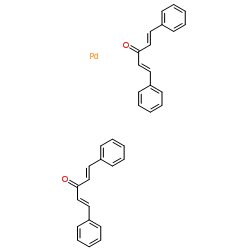Controlling olefin isomerization in the heck reaction with neopentyl phosphine ligands.
Matthew G Lauer, Mallory K Thompson, Kevin H Shaughnessy
Index: J. Org. Chem. , (2014)
Full Text: HTML
Abstract
The use of neopentyl phosphine ligands was examined in the coupling of aryl bromides with alkenes. Di-tert-butylneopentylphosphine (DTBNpP) was found to promote Heck couplings with aryl bromides at ambient temperature. In the Heck coupling of cyclic alkenes, the degree of alkene isomerization was found to be controlled by the choice of ligand with DTBNpP promoting isomerization to a much greater extent than trineopentylphosphine (TNpP). Under optimal conditions, DTBNpP provides high selectivity for 2-aryl-2,3-dihydrofuran in the arylation of 2,3-dihydrofuran, whereas TNpP provided high selectivity for the isomeric 2-aryl-2,5-dihydrofuran. A similar complementary product selectivity is seen in the Heck coupling of cyclopentene. Heck coupling of 2-bromophenols or 2-bromoanilides with 2,3-dihydrofurans affords 2,5-epoxybenzoxepin and 2,5-epoxybenzazepins, respectively.
Related Compounds
| Structure | Name/CAS No. | Molecular Formula | Articles |
|---|---|---|---|
 |
Bis(dibenzylideneacetone)palladium
CAS:32005-36-0 |
C36H42O2Pd |
|
Palladium-catalyzed, asymmetric Mizoroki-Heck reaction of be...
2012-07-25 [J. Am. Chem. Soc. 134(29) , 11833-5, (2012)] |
|
Sterically bulky thioureas as air- and moisture-stable ligan...
2004-05-13 [Org. Lett. 6 , 1577, (2004)] |
|
Palladium-catalyzed arylation of trimethylsilyl enolates of ...
2004-04-28 [J. Am. Chem. Soc. 126 , 5182, (2004)] |
|
[Aldrichimica Acta 15 , 13, (1982)] |
|
El Ali, B.; Alper, H.
[J. Org. Chem. 56 , 5357, (1991)] |